In the summer of 1992 I was a happy and carefree 13 year old. I spent long and sunny days playing with my friends. I cheered loudly when Andre Agassi beat a little-known Croatian player, to claim the Wimbledon title.
I had nothing to worry about.
The evening news reports were full of words that meant nothing to me: Serb, Croat, Bosniak, Muslim; and places called Belgrade and Sarajevo. Bombs were dropping, gunfire was heard, but to me it was far, far away.
It did not occur to me that this was Europe.
This was my continent, in my lifetime.
And it was fighting a base and bloody war, in a way that had not been seen since Hitler wreaked destruction across Europe in the 1940s.

Before this trip my knowledge of the conflict across the former Yugoslavia was patchy at best, so when I reached Serbia I was keen to find out more.
Belgrade:
I joined the free walking tour. It was not a tour to talk about communism or the war—there is a paid tour if you want to do that—but the twenty-something girl who showed us around talked a little about the troubles. She showed us a bank note with 11 zeros. She told us tales of rationing and people queuing for hours for bread, only to find that their wages had become completely worthless since they joined the line. She painted a sorry picture of suffering and hardship.
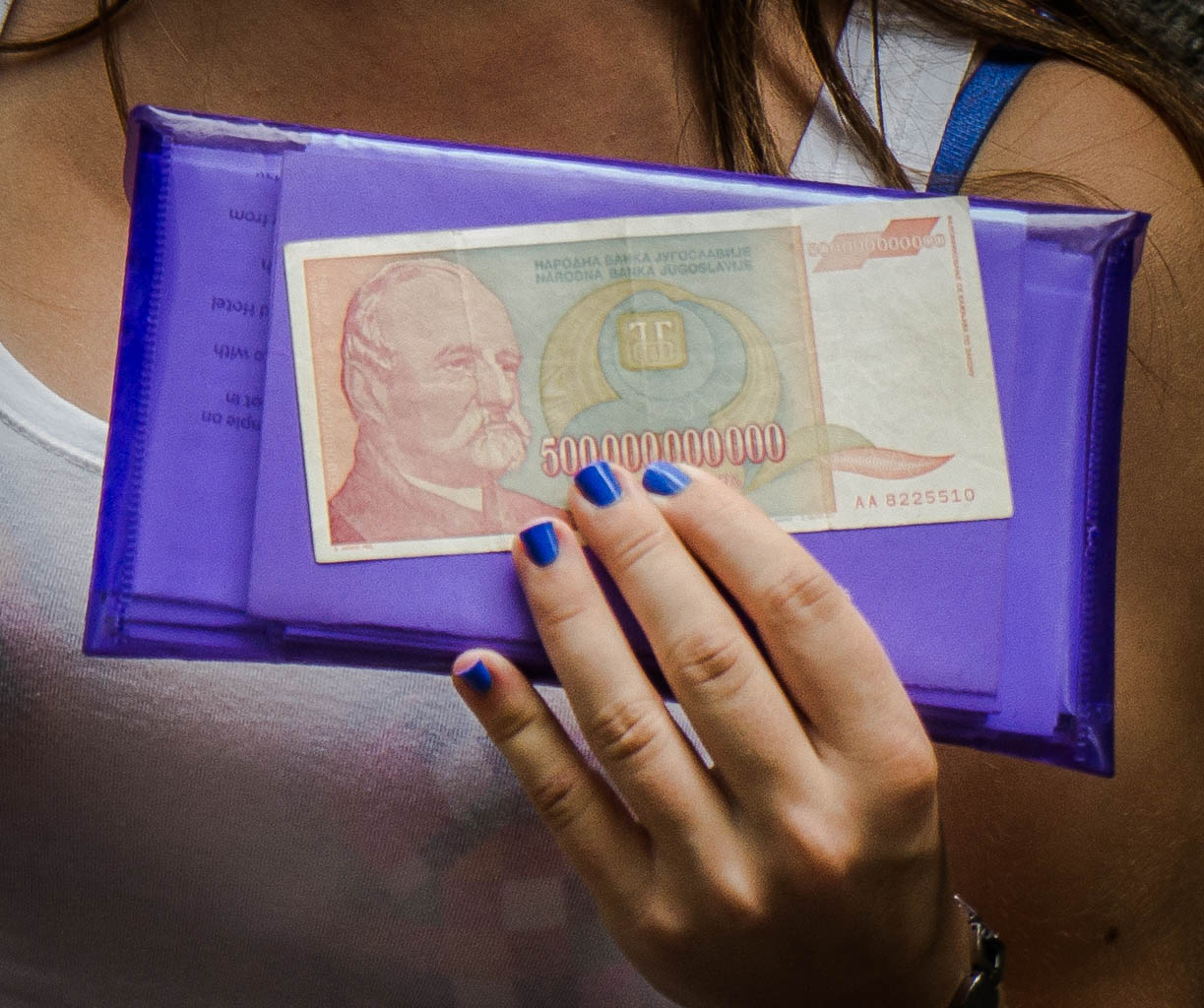
But one thing she made very clear: Serbia was a victim.
She pointed out a bridge and told us about the famous ‘bridge parties’ when the people of Belgrade would gather on the bridge in defiance of the bombers. She didn’t mention that the bombers were NATO bombers, or why they were bombing Belgrade. She did not take us to the two bombed out buildings, victims of a NATO strike.
Perhaps she did not want to answer difficult questions.
Instead, she led us on a tour of popular drinking establishments and told us about Belgrade’s reputation as a party capital—the way modern Belgrade has rebranded itself.
Sarajevo:
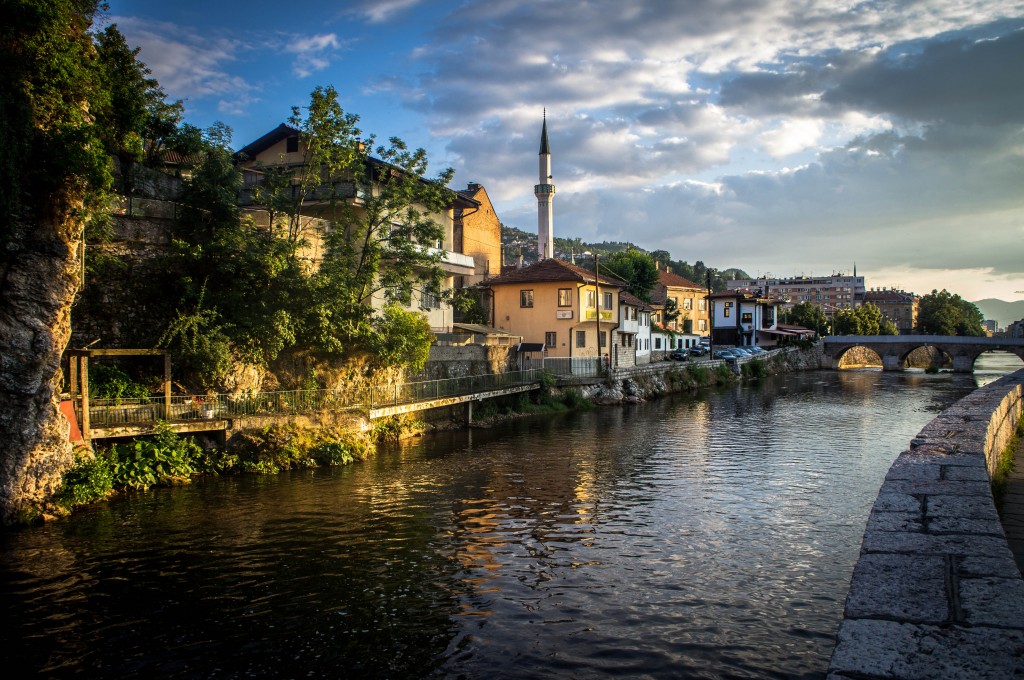
When I reached Sarajevo in Bosnia it was far more picturesque than I had imagined. I heard the same stories: currency that was worthless, rationing, and long lines of people queuing for bread and water.
Yes, it was the same story, but this time the tyrant was not NATO, the tyrant was Serbia. Belgrade, the friendly, courageous city I had visited only a day earlier was the enemy.
It was Serbian soldiers that surrounded the city. It was Serbian snipers who shot at people as they waited for bread. It was Serbian bombs that exploded in the streets, ripping up cobbled stones and tearing families apart.
Nothing was safe. Nothing was sacred.
Mourning families attended funerals for their loved ones by cover of night, as funerals were a favourite target of the snipers’ bullets.
For an incredible four years the United Nations looked on, refusing to allow the Bosnians weapons with which to defend themselves, and escorting those who escaped across the dangerous airport runway back into the city—which had effectively become a concentration camp. After initially looking to them for help, crushed Sarajevans branded them the ‘Useless Nations’.
It didn’t take long for Sarajevo to realise that it was completely alone. The world watched on, horrified, but unable to help.
Sarajevo is still picking up the pieces. Evidence of the war can be found around the city in the form of ‘Sarajevo Roses’, although many of these are being filled in after becoming too much of a tourist attraction.
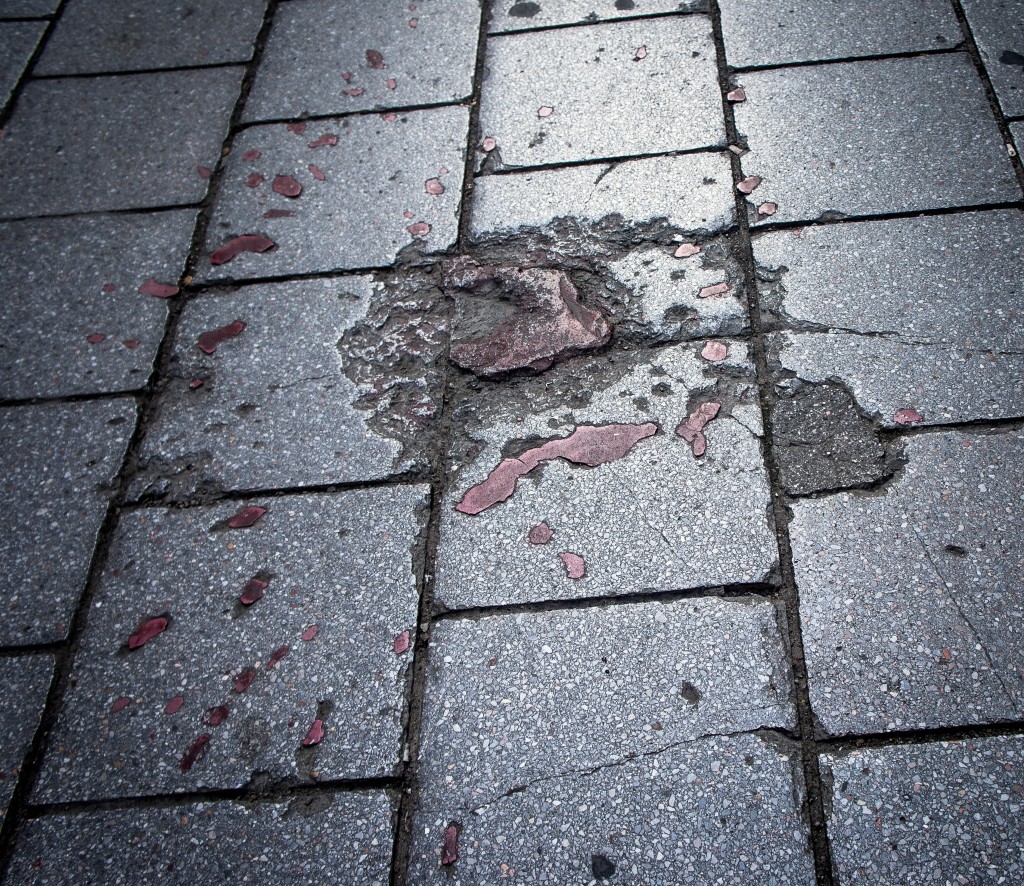
Less easy to conceal are the vast numbers of casualties denoted by white markers filling numerous cemeteries across the city. These mark the graves of soldiers who fell in conflict. There are simply far too many graves for any one city to ever accommodate. The dates on all the markers are between 1992-1995, and the age of the victims heartbreakingly young.
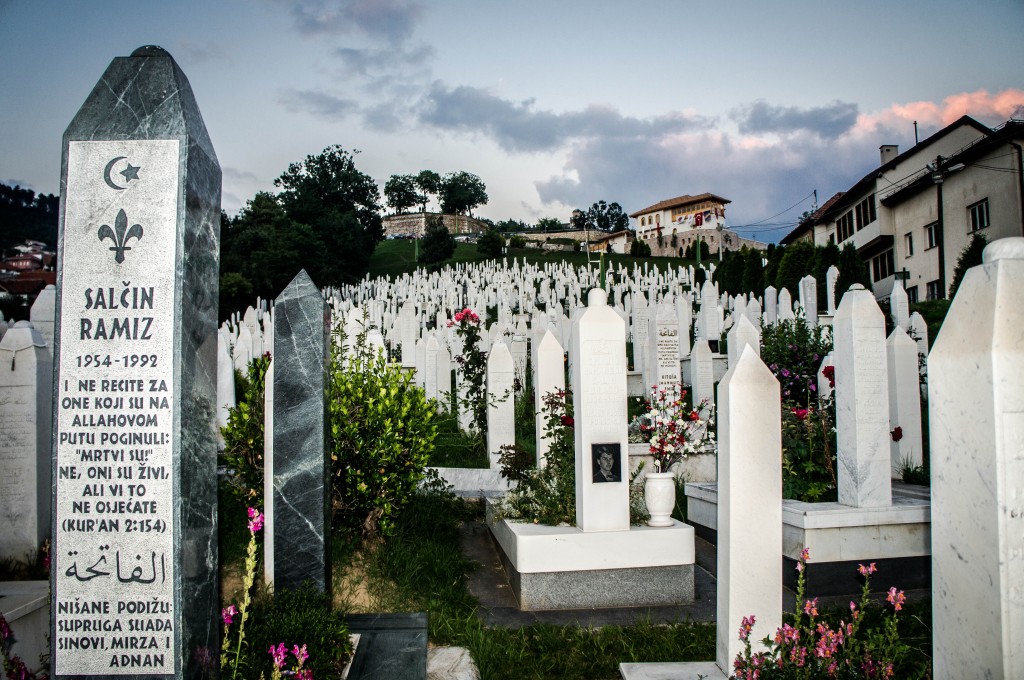
The two cities couldn’t be more different in their attitude towards the conflict—Belgrade quick to play the victim card, and Sarajevo quietly rebuilding its shattered city.
Due to the complex nature of the war in former Yugoslavia it is hard to definitively label victim and perpetrator, and laying blame on the current generation is pointless. Each of the countries committed gross atrocities towards the others, and as with all wars, the civilians of both countries were completely at the mercy of warring governments. They were the ones who suffered, and they are the ones who paid the ultimate price.
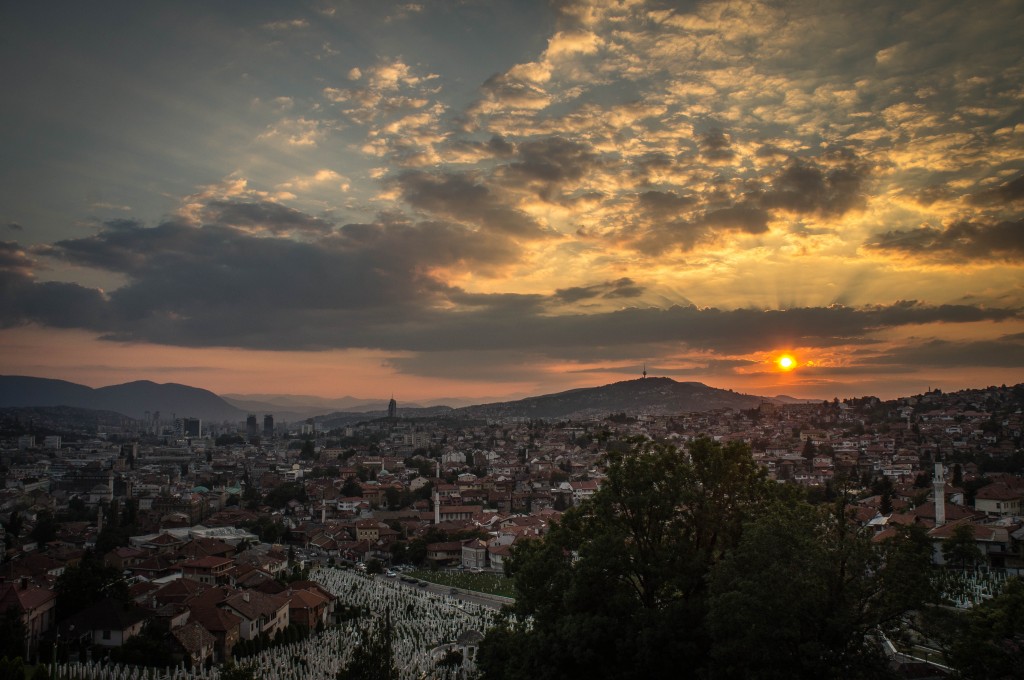
Have you visited Bosnia or Serbia? How do you view the differences between them? If you haven’t visited, do you want to? Please leave your comments below.

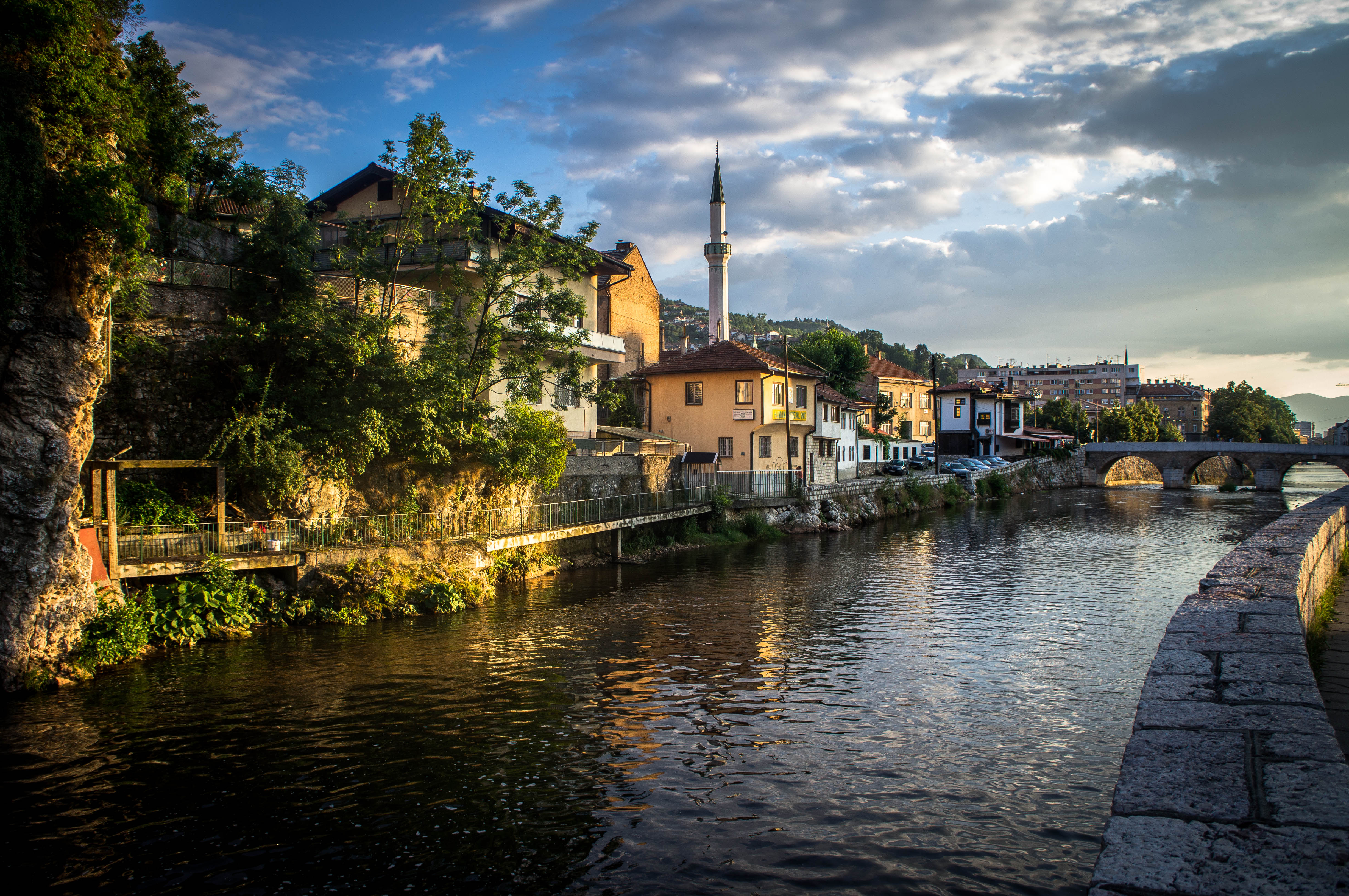
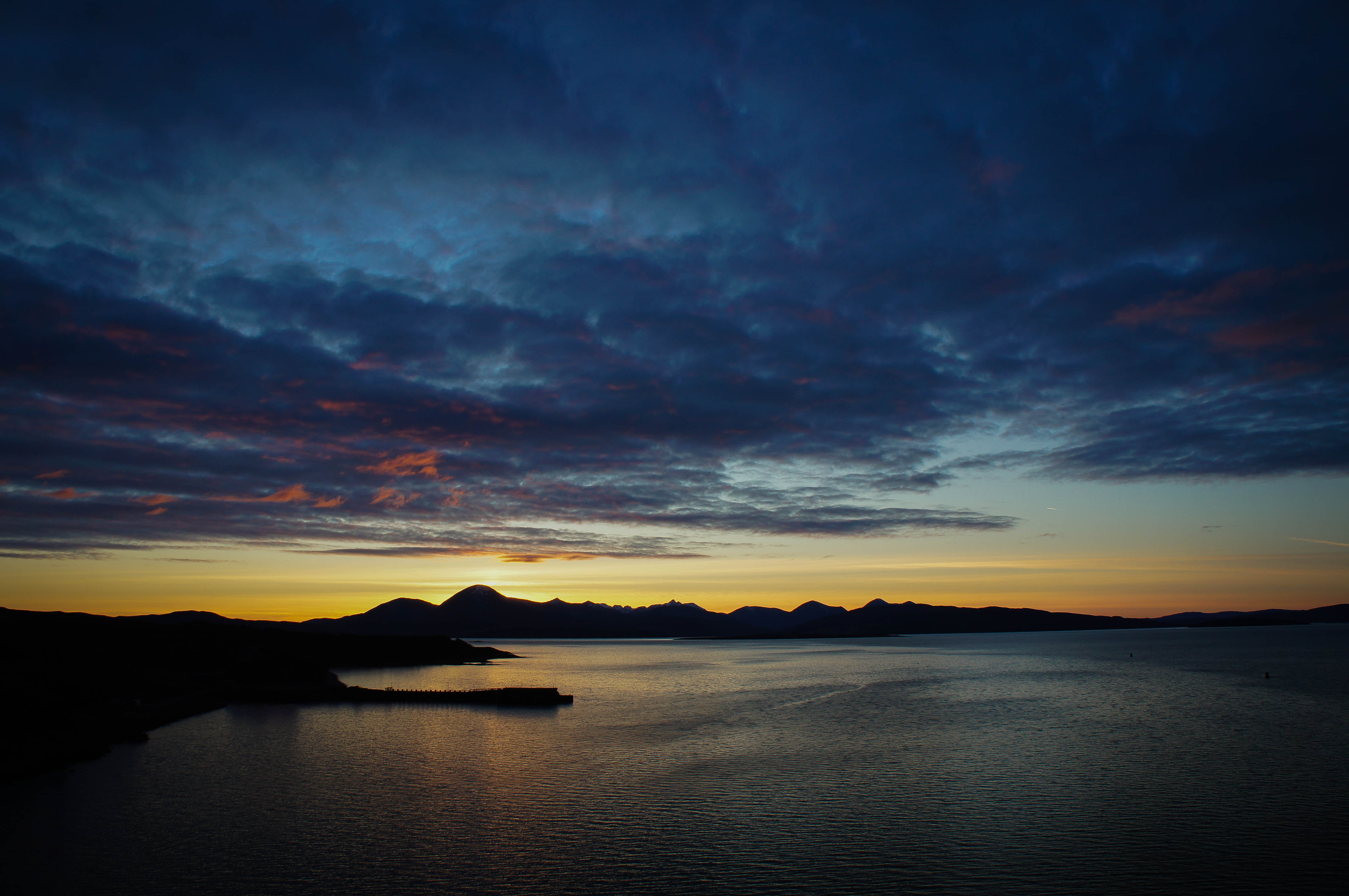

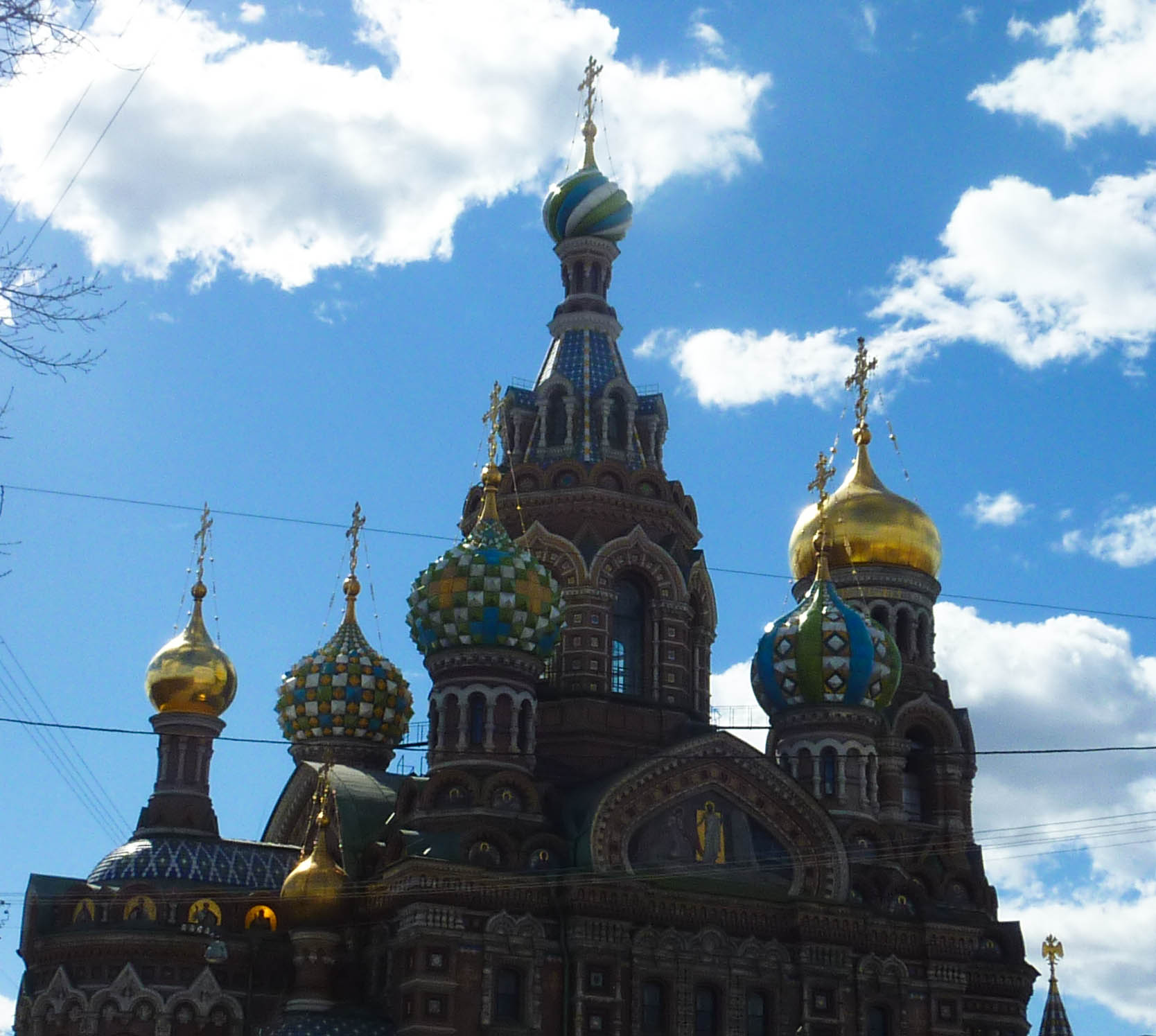
I had no idea Sarajevo was so lovely! That photo of the cemetery is heartbreaking.
Heather recently posted..The Best Meals We Ate in Budapest
It is, isn’t it? This is just one of many cemeteries in Sarajevo, they are all over the city (including in parks) – there was literally nowhere else to bury their dead as they couldn’t leave the city. It is a sobering experience and I can’t imagine what it must be like to grow up amongst such harrowing reminders.
In the 70s I went skiing in Yugoslavia, a country that I knew only as being behind the Iron Curtain in my lifetime. One day, in a white-out trapped for a few hours in a ski hut our instructor opened up to us, since there was no-one there to overhear. I predicted the bloodshed should Yugoslavia ever break up. In the 90s I often wondered what happened to him. I was totally ignorant of the country’s history back then, well only in as much as it came about as a country after WW2.
As someone, I guess, of your mother’s generation, we’d had daily news from wars in Vietnam, Indonesia,Egypt (Suez), Central America, Palestine, Korea, Nigeria, and other places over the years. We were somewhat inured to it all….until it happened in Europe. That was a shock. These other places were so far away, so foreign. Perhaps it helped to understand better what our own parents had suffered in the 40s. It seemed impossible, until you met soldiers on r & r here, who told you stories.
I have a book on my shelf, by David Rieff called “Slaughterhouse Bosnia” which I keep meaning to read. It comes highly recommended. I read another of his books and he’s a good writier to does consciencious research.
Linda recently posted..Deciding, Discarding and Dreaming
I will try to read that book. I really would like to know more about what happened, and why.
I have spoken to other people who visited Yugoslavia, and they all say that it was beautiful. It is still beautiful now, of course, but I would like to have visited the region before the war.
Whereabouts in Yugoslavia did you visit? What did the ski instructor say to you? It must have been fascinating to hear stories from inside the country.
What is left out of your Sarajevo narrative is that the city was 40% Serbian before the war and today is nearly pure Muslim (Bosniak). What is left out is the Bosnian Muslims had their own army which was larger in numbers, within Bosnia, than the Bosnian Serb army. What is left out that in Sarajevo alone their forces numbered up to 75,000 and THEY had snipers using buildings in the infamous “Sniper’s Alley” – that was testified to by UN soldiers who lived there during the war.
In fact during the ENTIRE war, and arriving the month before it started even, you had UN soldiers living there and being rotated in and out regularly.
The airport in fact was handed over to the UN when the Yugoslav soldiers left very early in the war (in late June 1992).
What is left out is that the Bosnian Muslims even massacred the Yugoslav/Serb soldiers when the were LEAVING their barracks there at the beginning of the war in a UN-brokered deal.
Also, the Bosniaks did the same in Tuzla.
Yugoslavia/Serbia-Montenegro was ordered to pull out their soldiers (and only native Bosnian Serbs could stay to fight) at the beginning of the war or face sanctions. They obeyed the order but still got sanctions anyways because the form which showed they complied was “lost” the day sanctions were to take effect. Once sanctions were in place the form was conveniently found but the sanctions were left in place.
What you also leave out is that the graves were most all SOLDIERS in their huge armies and it is their style to put graves near roadsides and were they are spectacles to be scene. Meanwhile Serbs put their bodies in cemeteries out of the way or in more private space.
Did you know that currently they are digging up a landfill in Sarajevo and that to the depth of 27 meters they have found human remains believed to be Sarajevo SERB CIVILIANS killed at the beginning of the war?
The Bosnian Muslims had death squads – they released their pre-war gangsters and criminals to head paramilitary and they were killing Sarajevo Serbs from the start.
Also, most of the damage in Sarajevo is on the front lines which snaked throughout the middle of the city, near the infamous Holiday Inn. The damage was were the two FORCES met. The Serb-held parts of Sarajevo, including some suburbs, ended the war MORE damaged than the Bosnian government held parts.
Canadian soldier James R. Davis wrote in his book “The Sharp End: A Canadian Soldier’s Story” about how the Bosnian Muslims would STAGE crimes when he was there. The Canadian soldiers witnessed Bosnian children being killed before their eyes below their building. The attack was traced to Bosnian Muslim positions.
Bosnian Muslims did kill Sarajevo civilians and the UN knowing that Serbs would automatically be blamed. It was their PR.
Serbs list SCORES of concentration camps in the Muslim-controlled parts of Sarajevo. A Georgian, U.S. woman who worked with the UN to settle refugees/immigrants from the Balkans spoke of how it was the Serbs who actually showed signs of torture and needed surgery for this.
The Bosnian Muslims don’t show signs of torture. They lost mostly soldiers and others due to collateral damage.
Plus there was also a Croat-Muslim war from the fall of 1992 until a U.S.-brokered deal ended in after February 1994. Some of the fiercest fighting of the war was between the Muslims and Croats and left Mostar the most damaged city of all in Bosnia. The Muslims and Croats fought in southern and central Bosnia.
Yes, those things are left out of my narrative. I am not a Historian, and I don’t pretend to be one. I write a small travel blog (with a small following) as a hobby and I write about my impressions of the places I visit based on the people that I meet and speak to when I am there.
At the end of my post I wrote “Due to the complex nature of the war in former Yugoslavia it is hard to definitively label victim and perpetrator” as I know that crimes were committed on all sides. If people wish to read about the facts I presume they would turn to information sites and not travel blogs for their information, therefore I do not get into complex politics on this site.
I will add to the article that the graves are soldiers graves – a fact that I was aware of – although I believe that it does not really matter if they were soldiers or not. Many of them did not choose to be soldiers or to fight in the war, and there are still too many graves for one city whether they belong to soldier or civilian. I will also add that crimes were committed on all sides incase that is not clear.
Thank you for your comment.
Wow, what a fine encyclopedic example of Serb propaganda in the last post. It seems like they have people employed to constantly spread it around and try to distort the truth about the conflict. I did not even bother to read the whole post, the first passage was already filled with so many lies, it is beyond comprehension.
For anyone who is truly interested in what happened in Bosnia some twenty years back, read about the Hague tribunal and see who is serving time in prison and learn about the atrocities those people have mad. Yes, they were crimes on every side, but Serbs did it with an agenda and systematically. Google about Prijedor white stripes, 11541 victims of Sarajevo siege (not soldiers), and finally Srebrenica genocide, the biggest mass killing in Europe since the holocaust, which Serbs blatantly continue to ignore, derogate and lie about.
Or maybe the best is not to read or listen to anyone, and just come and visit and see for yourselves. Observe and feel, eventually you will figure out the difference between the propaganda and the truth, if you care enough.
I know that the timing of my comment is not the best, but I stumbled upon this blog and, as a Sarajevan who was a child of seven years during the siege, I just had to react.
It is a great shame that you didn’t bother to read the whole post, because if you had spared the time you might have seen that the section about Sarajevo completely contradicts the tales I was told in Belgrade. I am smart enough to know that there was a large amount of propaganda involved in Belgrade, and my sympathies lay heavily with Sarajevo and Sarajevans, like yourself, who endured that terrible siege (although my heart breaks for any victims of war, regardless of side).
As an outsider I will never fully understand or comprehend what went on, but as you suggested I did come and visit and see for myself. I did look for the difference between propaganda and truth and this was my conclusion: “The two cities couldn’t be more different in their attitude towards the conflict—Belgrade quick to play the victim card, and Sarajevo quietly rebuilding its shattered city.” There was a quiet dignity in Sarajevo that I didn’t sense in Belgrade. Belgrade was too busy still pointing fingers. That seems to say a lot to me about who is to blame.
I really appreciate your comment and I am sorry if you were offended by the post, but please read a whole post before you comment – especially as it seems that you and I are most likely in agreement.
Just to make things clear, I have read your original post and and I did not have a problem with it, I respect your opinion. I was referring to the guest JJ’s post, on the comments section.
Thank you for the reply and the wonderful words about our country and the ex yugoslav region in general. There is so much more to Sarajevo than the 90’s war, and we want to put those dark days behind us. However, truth must be told so the future generations can enjoy their lives in peace, the greatest of life’s commodities. Unfortunately, instead of confronting with the past, and bowing to the innocent victims regardless of the side, some people continue to pick our wounds with their propaganda and lies, making excuses for the individuals who did all those crimes in the name of their people.
I do not expect you to understand the story behind our conflict, especially during such a short visit. And even if you did, one does not expect of you to elaborate about it in detail on your blog. It is not a historical, but a travel blog. And a good one at that. So I will not continue this political / historical discussion. If you are interested in a certain subject, you can write me an e-mail, I would be happy to try to give you an unbiased (as much as I can) explanation. And to emphasize, I did not want to make my comments into a rant against Serbs. I do not have anything against them, actually I have a lot of friends who are Serbs (yes they still live in Sarajevo, unfortunately not in the pre-war numbers). Many Serbs stayed and heroically defended our city during the siege. Furthermore, Sarajevo today is visited by numerous tourists from Belgrade and vice versa. People socialize, exchange experiences, ideas, do business, become friends. That is great and the way it should continue to be in the future.